| On June 25, 2021, the US Department of Defense released a 9-page “Preliminary Assessment: Unidentified Aerial Phenomena.”1,2 It was a public version of a longer classified report prepared for US Congress. Thanks to the good efforts of John Greenewald (The Black Vault), this complementary, 17-page report has been released under the Freedom of Information Act (FOIA).3 The UAP report is sanitized, that is, certain words, lines and entire sentences have been redacted by being blacked out to hide information such as military systems and operational details. By comparing both documents chapter by chapter, a number of inferences may be made, both |
Firstly, we must emphasize that the aim of the original report was “to provide an overview for policymakers of the challenges associated with characterizing the potential threat posed by the UAP.” For me, this is a misguided objective from the very beginning. The association of materiality is a preconceived notion that adds unnecessary dramatism and fantasy to the subject. Obviously, this has happened because of the active pressure of lobbying ufologists and promoters of alien ideas, mainly from the political and intelligence sectors. Therefore, I will be collating the public, unclassified report with the classified version (eight pages longer), to see what observations may arise.
Christopher Mellon is the primary architect of the push for this legislation, with the assistance of Luis Elizondo. The justification for the Pentagon’s Advanced Aerospace Weapon System Applications Program (AAWSAP) and its successor, the Advanced Aerospace Threat Identification Program (AATIP) was allegedly: “The objective of this program is to understand the physics and engineering of these applications as they apply to the foreign threat out to the far-term, i.e., from now through the year 2050.” Portraying UFOs as a national security issue is the only way to get the military interested, and was the motivation for the US Air Force investigating flying saucers from the 1940s to the 1960s.
SCOPE AND ASSUMPTIONS
On page 2, the input organizations for the report are described. In the third paragraph, a 3-letter word is redacted. Can it be CIA? But if FBI, DIA or NSA are already cited in the open, why hide the Central Intelligence Agency?
To calm overexcited UFO enthusiasts, let me highlight this statement from the “Assumptions” sentence: “…some UAP may be attributable to sensor anomalies.”
EXECUTIVE SUMMARY
We read on page 3: “As a result, the UAPTF concentrated its review on [missing space for 12 letters] describing incidents that occurred between 2004 and 2021.” The redaction could correspond to XXX reports, for instance. As the number of handled reports is estimated further down in the report as 144, the question arises whether the actual figure is different. But why censor this? Perhaps because the source is other than human testimony, obtained by space monitoring systems?
Then the report mentions that “In a limited number of incidents, UAP reportedly appeared (two cautious weasel words–from now on, added emphasis to several quotes is represented in italics) to exhibit unusual flight characteristics.” The classified version expands on this writing and adds: “…including several in which the [65 mm redacted] involving [123 mm redacted].” The censored words probably refer to certain aircraft, vessels and/or sensitive operations. To me, the important thing is what both texts say next: These observations could be the result of sensor errors, spoofing, or observer misperceptions and require additional rigorous analysis. I could not agree more. I hope they are starting to learn, although their reinvention of the wheel will cost a lot of money defrayed by US taxpayers.
AVAILABLE REPORTING LARGELY INCONCLUSIVE
Next, the public report says that “144 reports originated from USG sources. Of these, 80 reports involved observation with multiple sensors. Most reports described UAP as objects that interrupted pre-planned training or other military activity.” The copy to the Congress has a 7-character blank space before the figure of 144. I am inclined to think it says something like Of XXX, actually giving the total number of incidents collected. Following “multiple sensors” it adds “including [71 mm redacted] and [27 mm redacted]. The remaining [18 mm redacted] observed incidents were captured by [28 mm redacted]. (See Tables 1 and 2.)” Obviously, the type of used sensors is secret information. It also confirms that another set of reports is not included in the count of 144, those that were probably captured from orbiting satellites and/or foreign intel devices that DoD is not reasonably willing to disclose to those who do not have a need to know. The classified report includes four new lines, mostly readable, plus three footnotes (6 more lines) indicating a significant number of reports were from military operations and exercises. “Of the 144 USG reports, [number redacted] originated from Navy ‘Range Fouler’ reports...” (“U.S. Navy aviators define a ‘range fouler’ as an activity or object that interrupts pre- planned training or other in a military operating area or restricted airspace.”) It is followed by nine new lines, largely blacked out where supposedly “the description of unknown targets” was discussed. Tables 1 and 2 appear at page 12, to be commented on later.
On page 5 there is an inset for “UAP Collection Challenges.” The public version has three bullet points, while the classified one has four. One contains 145 mm of censored space on the topic of “sensors mounted on military platforms” where specific purposes or functions are probably named. Interestingly, the report says: As a result, those sensors are not generally suited for identifying UAP and it is followed by this brief new text “which can be [38 mm redacted],” where some class of identification might appear. The fourth bullet point has five and a half lines completely censored.The section below, “But Some Potential Patterns Do Emerge,” contains two more paragraphs in the classified version. One (five lines) establishes “The most common shape described by military personnel…” but all descriptions of the shapes are redacted. Another (five more lines) describes the altitudes at which “Observed UAP usually traveled,” as well as some other dynamics, but every detail is censored.
UAP PROBABLY LACK A SINGLE EXPLANATION
UAP THREATEN FLIGHT SECURITY SAFETY AND, POSSIBLY, NATIONAL SECURITY
This chapter fills in page 9 of the report. My immediate reflection is: how many commercial or military accidents have involved encounters with unidentifiable flying objects in the history of aviation? From 1903 to date, hundreds of millions of flights have been in operation. Is it rational that today any government questions itself whether UFOs/UAP constitute a risk to flight safety? If true, wouldn't it have been proven many years ago with extensive evidence? As for the second part of the title, it is even less logical, when numerous governments around the world have closed their UFO desks, and released and declassified their UFO archives on the conviction that during all these years (1947 to thepresent day) UFO sightings have posed no risk to national security. Reinventing the wheel again?
This classified chapter has twice the length of the public copy, but most of the new text is redacted. In the “Ongoing Airspace Concerns” section, the only words that are released say: “We have documented flight safety concerns and…” followed by a mostly censored 3-line sentence on a (date missing) sighting where “a pilot briefly observed [redacted]. However, a [redacted].” Again, the adverb with the adversative sense. The public assessment establishes: “The UAPTF has 11 reports of documented instances in which pilots reported near misses with a UAP.” In this respect, excuse me if I express my particular doubts about the accuracy of such close, near-miss incidents.
But it is in the “Potential National Security Challenges” section here that a complete 15- line added paragraph is censored. It is after writing that “We currently lack data to determine any UAP are part of a foreign collection program or indicative of a major technological advancement by a potential adversary.” I am at loss to know what this new text may voice, but I cannot imagine that the United States needs the UAPTF to determine what its adversaries do or don’t do in terms of intelligence collection.
EXPLAINING UAP WILL REQUIRE ANALYTIC,
COLLECTION AND RESOURCE INVESTMENT
In the initial section of this chapter on pages 10-11, “Standardize the Reporting, Consolidate the Data, and Deepen the Analysis,” five lines are added, almost complete: “Given the [120 mm redacted] the UAPTF also plans to explore how best to leverage the capabilities of non-DoD departments and agencies to enable effective and efficient transfer of data and [redacted] among the DoD [redacted] and the law enforcement community.” Good if they are thinking of consulting with NASA, NOAA, etc. on UFO sightings. The section headed as “Expand Collection” shows a censored 11-line paragraph as well. Towards what lines the data collection will expand is only subject to speculation.
Page 12 of the declassified report covers “Table 1. USG UAP Reports by [redacted] (144 total),” and “Table 2. UAP Detected by [redacted].” These two tables are fully censored, except for these few words in Table 2: “In over half of the 144 reports from USG observers [redacted]…” I would bet that part of (and/or in addition to) the 144 standard UFO sightings, the UAPTF has collected data from signal intelligence sources.
Page 13 of the report to Congress is “Figure 1,” a full-page tabulation for UAP “Common Shapes” and “Less Common/Irregular Shapes.” However, all data and illustrations are redacted. I hope they will soon find out that there are as many shapes and colors and dimensions and dynamics as observers themselves.
APPENDIX A
In page 14, “The sections below provide a brief summary of contributions by intelligence discipline,” with censored data contributed by the four types already listed in the public report’s Appendix B, as follows: “Geospatial Intelligence (GEOINT)…The images and videos captured…”; “Signals Intelligence (SIGINT)”; “Human Intelligence (HUMINT)”; and “Measurement and Signature Intelligence (MASINT).” A last line adds: “The UAPTF had no MASINT reporting on the events considered in this dataset.”
APPENDIX B
I also doubt the practical help local FBI agents can provide when a UAP has been recorded close to a missile silo, from a Stealth aircraft or a Navy ship, or during a secret military exercise. It will be extremely limited.
APPENDIX C
Page 16 repeats the contents of what was listed as Appendix A in the public document: “Definition of Key Terms,” i.e., UAP, UAP Event, UAP Incident, and UAP Report. Four censored lines appear in the classified version of the report to Congress.
APPENDIX D
Page 17. It is identical to the public version’s Appendix B, and it enumerates the eight intelligence information requirements dictated from the Senate in line with the Intelligence Authorization Act for Fiscal Year 2021.
Speaking in general, the major flaw of this report (both in the full and the summarized forms) is the confession that out of (at least) 144 sightings examined, occurred between 2004 and 2021, with the majority coming in the last two years, “in only one instance, the UAPTF was able to identify the reported UAP with high confidence” (it was a large, deflating balloon). This inability to discover the real nature of things flying in the sky is amazing. I just keep my fingers crossed that Vladimir Putin or Kim Jong-un do not decide to attack the United States with drones or similar unconventional weapons, otherwise, America, you are lost!
For further insight into the UAPTF report, I recommend seeing the files presented at the US Navy’s FOIA Reading Room, “Case-Files: UFO Info,” which contains some of the files that went into the UAPTF’s evaluation.4 One particular file is of interest, a UAP reported in a “Range Fouler Debrief Form.” While not explicitly labelled, it seems to be the UAPTF’s lone object that was able to be identified with “high confidence.”5
Additionally, the form may give insight to redacted information from the UAPTF report concerning “Common Shapes” for UAP. On the form, there’s the section, “Please check all that apply,” which gives twelve check boxes for shapes and characteristics, as follows:
Round
Square
Balloon-shaped
Wings/Airframe
Other Shape
Apparent Propulsion
Moving Parts
Metallic
Markings
Translucent
Opaque
Reflective
Lastly, it would be most convenient to briefly discuss the US military’s usage of UFO terminology. A good source is US Navy spokesman Joseph Gradisher’s interview published back in 2019 by The Washington Post.6 To summarize, Gradisher explained that “The ‘Unidentified Aerial Phenomena’ terminology is used because it provides the basic descriptor for the sightings/observations of unauthorized/unidentified aircraft/objects that have been observed entering/operating in the airspace of various military-controlled training ranges.” Gradisher told The Post, that UAP was not a new term, that Navy preferred to eliminate the cultural stigma that might discourage pilots from reporting “UFO” incidents for fear of being labeled “kooky.” “Gradisher said one possible explanation could be the rise of unmanned aerial systems… such as quadrocopters, a kind of drone easily available to the public.” When the Navy says UAP, they essentially mean unidentified aircraft, but the public hears UFO.
The Navy is no longer in charge of the investigation and “UAP” was removed from the name of the new organization. On November 23, 2021, the U.S. Department of Defense announced the establishment of “the Airborne Object Identification and Management Synchronization Group (AOIMSG) as the successor to the U.S. Navy’s Unidentified Aerial Phenomena Task Force.” 7 The announcement stated the “preliminary assessment report submitted to Congress in June 2021… identified the need to make improvements in processes, policies, technologies, and training to improve our ability to understand UAP.” The further details promised about the office have yet to be announced.
Acknowledgments:
The author wishes to express his gratitude to Curt Collins for input and advice, and to Richard W. Heiden for editing.
Notes
(1) Preliminary Assessment: Unidentified Aerial Phenomena
(2) V.J. Ballester-Olmos, “The UAP Pentagon Report - Commented Abstract” (June 26, 2021), fotocat.blogspot.com
(3) FOIA Request response to John Greenewald/The Black Vault, FOIA Request response to John Greenewald/The Black Vault (see Enclosure 2).
(5) File name: “RANGEFOULERDeflatedBalloon”:
(6) Kayla Epstein, “Those UFO videos are real, the Navy says, but please stop saying UFO,’” The Washington Post online, September 18, 2019, Those UFO videos are real, the Navy says, but please stop saying ‘UFO’
*Vicente-Juan Ballester Olmos—has been involved in UFO research since 1966; he is an advocate of science based investigation/analysis. His achievements are voluminous and he has worked in conjunction with the most esteemed Ufologists of the last 50 years.
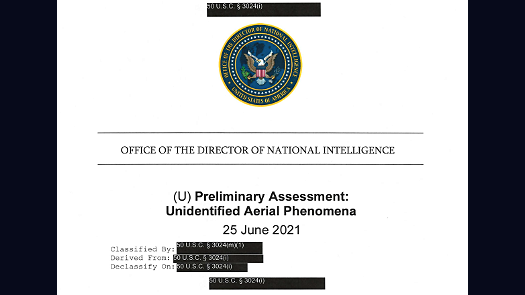

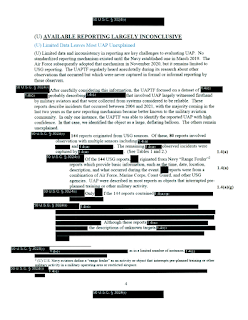
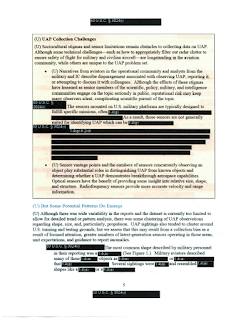





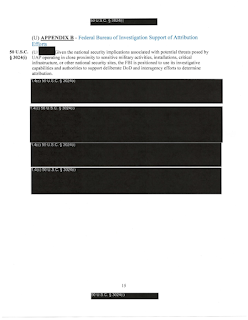
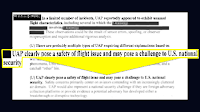


No comments :
Post a Comment
Dear Reader/Contributor,
Your input is greatly appreciated, and coveted; however, blatant mis-use of this site's bandwidth will not be tolerated (e.g., SPAM, non-related links, etc).
Additionally, healthy debate is invited; however, ad hominem and or vitriolic attacks will not be published, nor will "anonymous" criticisms. Please keep your arguments/comments to the issues and subject matter of this article and present them with civility and proper decorum. -FW